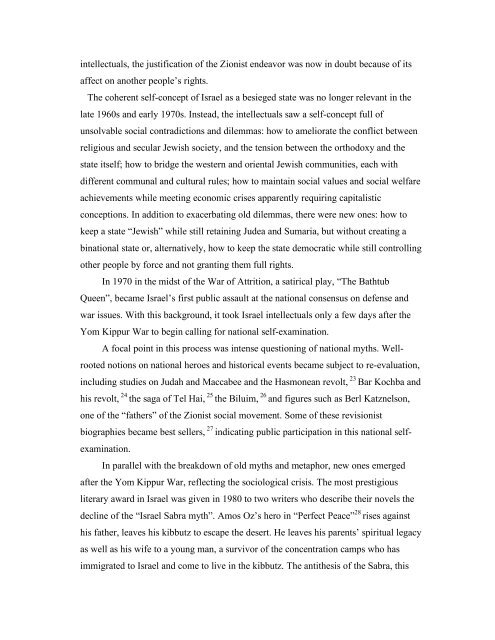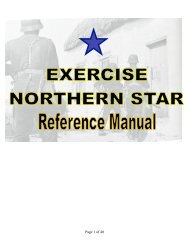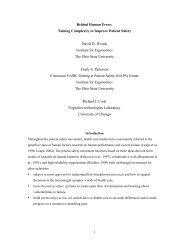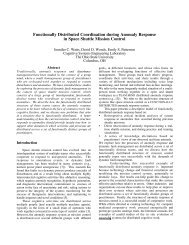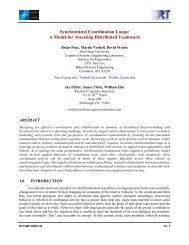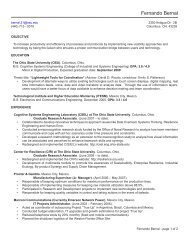Fundamental Surprises Zvi Lanir Decision Research 1201 Oak ...
Fundamental Surprises Zvi Lanir Decision Research 1201 Oak ...
Fundamental Surprises Zvi Lanir Decision Research 1201 Oak ...
- No tags were found...
You also want an ePaper? Increase the reach of your titles
YUMPU automatically turns print PDFs into web optimized ePapers that Google loves.
intellectuals, the justification of the Zionist endeavor was now in doubt because of its<br />
affect on another people’s rights.<br />
The coherent self-concept of Israel as a besieged state was no longer relevant in the<br />
late 1960s and early 1970s. Instead, the intellectuals saw a self-concept full of<br />
unsolvable social contradictions and dilemmas: how to ameliorate the conflict between<br />
religious and secular Jewish society, and the tension between the orthodoxy and the<br />
state itself; how to bridge the western and oriental Jewish communities, each with<br />
different communal and cultural rules; how to maintain social values and social welfare<br />
achievements while meeting economic crises apparently requiring capitalistic<br />
conceptions. In addition to exacerbating old dilemmas, there were new ones: how to<br />
keep a state “Jewish” while still retaining Judea and Sumaria, but without creating a<br />
binational state or, alternatively, how to keep the state democratic while still controlling<br />
other people by force and not granting them full rights.<br />
In 1970 in the midst of the War of Attrition, a satirical play, “The Bathtub<br />
Queen”, became Israel’s first public assault at the national consensus on defense and<br />
war issues. With this background, it took Israel intellectuals only a few days after the<br />
Yom Kippur War to begin calling for national self-examination.<br />
A focal point in this process was intense questioning of national myths. Wellrooted<br />
notions on national heroes and historical events became subject to re-evaluation,<br />
including studies on Judah and Maccabee and the Hasmonean revolt, 23 Bar Kochba and<br />
his revolt, 24 the saga of Tel Hai, 25 the Biluim, 26 and figures such as Berl Katznelson,<br />
one of the “fathers” of the Zionist social movement. Some of these revisionist<br />
biographies became best sellers, 27 indicating public participation in this national selfexamination.<br />
In parallel with the breakdown of old myths and metaphor, new ones emerged<br />
after the Yom Kippur War, reflecting the sociological crisis. The most prestigious<br />
literary award in Israel was given in 1980 to two writers who describe their novels the<br />
decline of the “Israel Sabra myth”. Amos Oz’s hero in “Perfect Peace” 28 rises against<br />
his father, leaves his kibbutz to escape the desert. He leaves his parents’ spiritual legacy<br />
as well as his wife to a young man, a survivor of the concentration camps who has<br />
immigrated to Israel and come to live in the kibbutz. The antithesis of the Sabra, this


